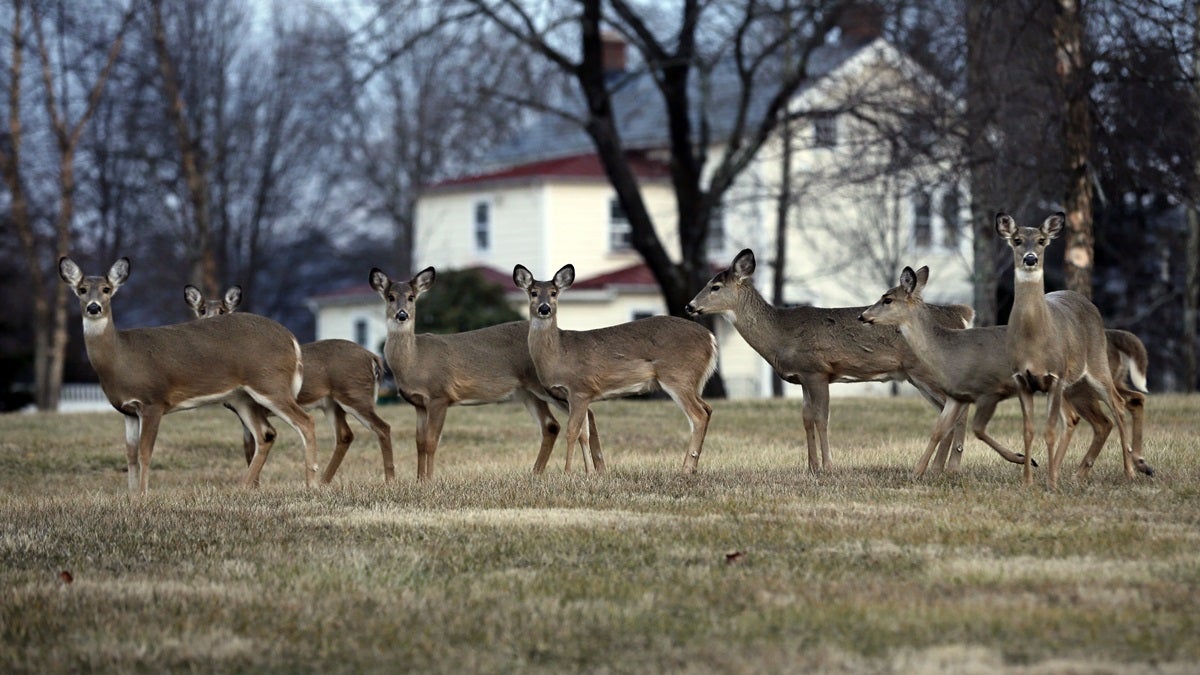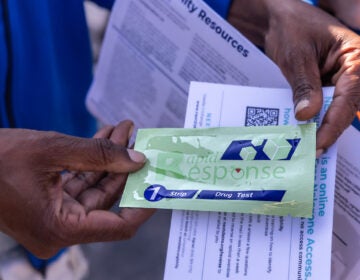Delaware urges drivers to watch out for deer

(AP Photo/Mel Evans)
Shorter fall days mean drivers who leave the office at 5 p.m. will now be driving at dusk, exactly when Delaware’s Dept. of Natural Resources and Environmental Control says deer are just getting going.
And with Daylight Saving Time ending this weekend, DNREC’s Division of Fish and Wildlife is urging drivers to watch out for deer crossing roads.
“We might be heading home to relax at the end of our day, but deer are just beginning their busiest time around dusk,” said DNREC Game Mammal Biologist Joe Rogerson. “From dusk up to midnight and shortly before and after sunrise, are when motorists need to be especially alert and watch for them.”
The average white-tailed deer in Delaware tips the scales at about 130 pounds, with larger bucks weighing in at 180 pounds or more. Hitting an animal that size, DNREC says, can not only do serious and expensive damage to your car, but it can also lead to injury or trigger an accident with another car.
More than 1,000 crashes involving deer were reported to Delaware police departments last year; as a result of those 1,030 crashes, statistics show one person was killed and 56 injured. The state says those numbers don’t reflect the thousands of deer/vehicle collisions reported directly to insurance companies.
State Farm Insurance says it logged 4,267 deer/vehicle collision claims in Delaware between July 1, 2012 and June 30, 2013. Of the 41 states where deer collisions are most likely, State Farm’s annual report ranks Delaware 27th. Considered a medium-risk state, the insurance carrier says there is a 1 in 168 chance of a collision; the national average is 1 in 174, with property damage costs running more than $3,000.
Mating season
National numbers show October, November and December are when about half or more accidents involving deer occur.
“Fall is mating season for deer,” Rogerson said. “Because of this, deer are more active, with bucks single-mindedly pursuing does – sometimes right into the path of your car.”
DNREC says while Delaware’s deer population has stabilized in the last six years, there are still several areas in the state with significant deer populations.
“Combine a high deer population with decreasing deer habitat and increased commuters, and you have a recipe for a high number of deer-vehicle collisions,” added DNREC Species Research Program Manager Rob Hossler.”
Safety tips
Attentive driving is your best defense, but DNREC suggest keeping these tips in mind:
Turn headlights on at dawn and dusk; switching to high beams when you can;
Watch for deer crossing signs;
Slow down immediately and proceed with caution if you see a deer crossing the road ahead; deer travel in groups so where you see one, there are likely to be others;
Do not rely on deer deterrents, as the devices have not been proven to reduce collisions;
Don’t swerve to avoid a deer, brake and stay in your lane;
If you hit a deer, get your car off the road if possible, call police and keep your distance; a frightened and/or wounded deer might bite, kick or gore a well-meaning person.
WHYY is your source for fact-based, in-depth journalism and information. As a nonprofit organization, we rely on financial support from readers like you. Please give today.





